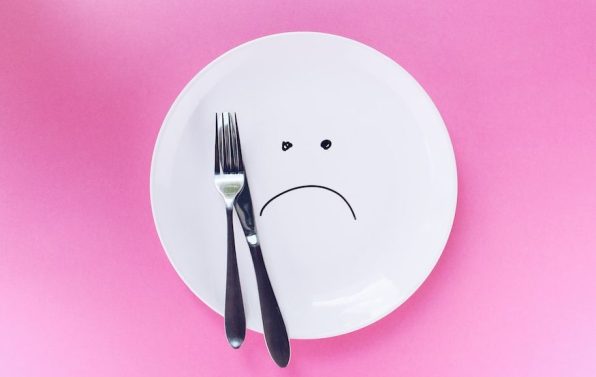
Intermittent Fasting After 40: What to Know Before You Start
More women are exploring intermittent fasting (IF) after 40 as a tool to help manage energy, hormones and digestion. But does it really support better health? Here’s a clear, evidence-informed look at what it might offer, and how to approach it safely and sustainably in midlife.
What Is Intermittent Fasting?
Intermittent fasting refers to eating within a defined window of time – such as 8, 10, or 12 hours – and fasting for the remainder. The most common approach is 16:8 (16 hours fasting, 8 hours eating), but 12:12 is often better tolerated by beginners or those navigating hormonal changes.
Other patterns include whole-day fasting where you eat 1 meal every 24 hours, and alternate-day fasting where you eat freely, just every other day.
Unlike calorie-restricted diets, IF focuses more on when you eat than what you eat. It’s not about skipping meals randomly – but about creating a consistent rhythm that may support metabolic and hormonal function.
Why It’s Different for Women in Midlife
Hormones play a major role in how your body responds to fasting. After 40, when oestrogen and progesterone levels begin to fluctuate, this effect can become more pronounced. Hormonal shifts influence blood sugar regulation, appetite, energy, sleep and stress response – all of which intersect with fasting.
IF may offer benefits, but women in midlife are also more sensitive to stress (including the physical stress of long fasts), which can trigger cortisol spikes, disrupted sleep, or thyroid issues if fasting is too aggressive.
Some women thrive. Others don’t. That’s why intermittent fasting after 40 needs a different, more flexible approach than the one-size-fits-all plans found online.
What the Research Shows (So Far)
The evidence for IF is still emerging – especially in women over 40 – but several findings are relevant:
- Blood Sugar + Insulin
IF may improve insulin sensitivity and lower blood glucose levels, particularly in people with prediabetes or metabolic syndrome.
- Weight + Body Composition
Some studies [2] have reported significant weight loss, in others more modest change. Often, a reduction in abdominal fat is achieved. However, results are similar to those from traditional calorie restriction. It’s likely that changes in food quality and choices are playing a part, rather than fasting alone.
- Cellular Repair
Fasting beyond 12 hours may activate autophagy – a cellular “clean-up” process associated with longevity and reduced inflammation.
- Cognition + Brain Health
Early evidence suggests fasting might support cognitive flexibility and mitochondrial health, though human data are still limited.
However, most studies have been done in men or younger adults. Women’s bodies – particularly in midlife – respond differently.
“Some women thrive on intermittent fasting. Others don’t – and that’s not failure, it’s feedback.”
Pros You Might Notice
Some signs suggest that a fasting approach may be working for you:
- Fewer energy dips or cravings between meals
- A clearer, more predictable appetite rhythm
- Less bloating or digestive sluggishness in the evening
- Gentle improvements in blood sugar control
What to Watch For
Some signs suggest that your fasting approach may not suit you:
- Feeling lightheaded, shaky, or fatigued in the morning
- Poor sleep (especially waking at 3–4am)
- Increased irritability or anxiety
- Missed periods (if premenopausal) or a worsening of menopausal symptoms
In these cases, your fasting window may be too long, or your meals may lack fibre or healthy fats, or you might not be eating enough protein to carry you through.
This is the time to eat more nutrient-rich whole foods and fewer heavily-processed options.
One way you might address this is by keeping a simple food diary for a couple of days and seeing if there are any obvious gaps to fill.
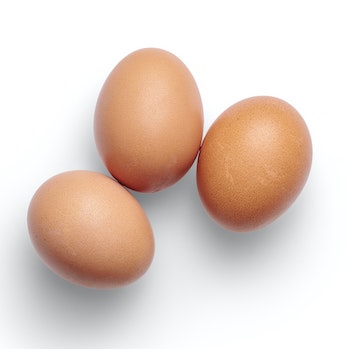
How to Start Intermittent Fasting: A Safer Approach for Midlife
If you’re curious to try IF, consider these steps:
1. Start with a 12:12 window (e.g., stop eating at 7:30pm, start again at 7:30am).
2. Ensure meals are nutrient-dense and balanced – especially with 25–30g of protein per meal.
3. Don’t skip breakfast unless you genuinely feel better doing so. Many women in perimenopause need breakfast for blood sugar and mood regulation.
4. Pair IF with stable sleep and manageable stress levels, not during high-demand or burnout phases.
5. Be flexible: listen to your body, not the clock. Some days, a shorter fast is more appropriate.
The Bottom Line
Intermittent fasting isn’t a magic bullet — but for some women over 40, it can be a useful tool to support energy, digestion and metabolic health.
What matters most is context: your current health, stress levels, and how well-nourished your meals are. Intermittent fasting after 40 works best when it supports your lifestyle, not when it adds more pressure or causes depletion.
Some women thrive on it. Others don’t. That’s not failure, it’s feedback. If it works, you’ll know. If it doesn’t, your body will tell you – and it’s worth listening.

These five foods (and drinks) can help you get through the day when you’re sleep-deprived – without overstimulating your system or making things worse later.
Would you eat all five? Or just start with one? Personally, I’d be scrambling some eggs.
Let me know – what’s your go-to after a rough night? Leave a comment below, I’d love to hear.
After the much-needed indulgences of Christmas and the excitement of the New Year, it can take a while to get back into a regular bedtime rhythm. Adding another national lockdown into the mix doesn’t help, and might have thrown your best intentions and plans into further disarray.
The daytime could be fine – you find the never-ending need to be flexible and adaptable pushes many worries out of your mind. However, when nighttime comes and doubts or uncertainties loom large, you find yourself tossing and turning, and in for yet another sleepless night.
But a day of exhaustion, fatigue, bleary eyes and a short temper is NOT what you need right now.
Especially if you end up downing an extra cup of coffee (or 3!) and a bar of chocolate, just to survive till the evening, only to find these stimulate you and interrupt your sleep the next night.
If this sounds far too familiar, and you’re feeling fed up, the good news is that it’s possible to break out of this vicious circle.
There are foods you can eat to help you recover after a sleepless night (and a few that you’ll absolutely want to avoid).
Eat EGGS for breakfast
 Managing your cortisol levels is key to recovering after a rubbish night’s sleep.
Managing your cortisol levels is key to recovering after a rubbish night’s sleep.
Cortisol is one of two hormones which regulates your sleep-wake cycle (the second is melatonin) and typically levels rise to help you wake up, and fall later in the day in time for you to go to bed. Unfortunately, one of the effects of sleep deprivation (and stress and caffeine too) is to disturb the natural ebb and flow of your cortisol levels leaving you wide awake the following night.
Fortunately, there are lots of tasty foods that help reduce cortisol and maintain a healthy level, such as eggs, berries, and other low-GL fruit and veg. Animal protein and foods which are rich in salt, fat and refined sugars are known to disturb it. So ditch the bacon, sausages and sugary cereal and switch to poached eggs, spinach and berries at breakfast instead.
Eat BEETROOT for elevenses
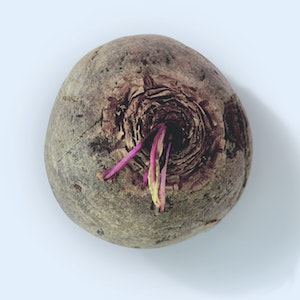 Have you noticed how everything takes so much more effort after a night without sleep? One way to overcome this brain drain and muscle fatigue is with a beetroot boost. Rich in nitrates, which are then converted to nitric oxide, beetroot helps dilate blood vessels and increase your oxygen flow. You’ll think more clearly, your muscles will work more efficiently, and over the long term your stamina to exercise may improve.
Have you noticed how everything takes so much more effort after a night without sleep? One way to overcome this brain drain and muscle fatigue is with a beetroot boost. Rich in nitrates, which are then converted to nitric oxide, beetroot helps dilate blood vessels and increase your oxygen flow. You’ll think more clearly, your muscles will work more efficiently, and over the long term your stamina to exercise may improve.
However, concentrated shots of beetroot juice aren’t for everyone, particularly if you have low blood pressure, are on blood pressure meds or have kidney stones.
Eat CRUNCHY VEG (and your favourite dip) as an afternoon snack
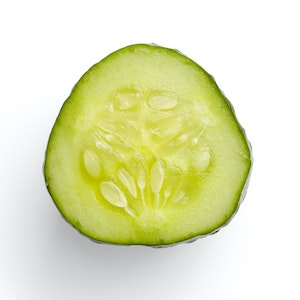 A veg and dip combo (think guacamole, humous or pesto) makes the perfect snack to keep you sustained in the afternoon – providing proteins and low-GL carbs to help balance your blood-sugar levels, good fats to help you focus, and LOTS OF NOISE. Research shows that behaviours around food are influenced by what you hear, and it’s been suggested that eating crunchy foods can help you feel full faster [1]. This is particularly ideal after a sleepless night when the natural tendency is to eat more in general, and more sugary foods too.
A veg and dip combo (think guacamole, humous or pesto) makes the perfect snack to keep you sustained in the afternoon – providing proteins and low-GL carbs to help balance your blood-sugar levels, good fats to help you focus, and LOTS OF NOISE. Research shows that behaviours around food are influenced by what you hear, and it’s been suggested that eating crunchy foods can help you feel full faster [1]. This is particularly ideal after a sleepless night when the natural tendency is to eat more in general, and more sugary foods too.
Drink GREEN TEA at 4pm
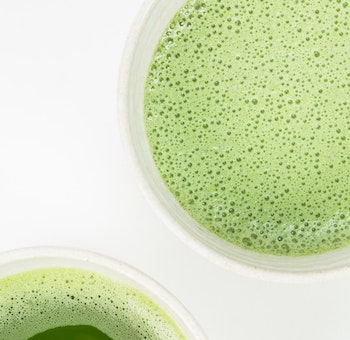 You’ll probably really, REALLY want coffee – that hot, bitter jolt is guaranteed to keep you awake. After the first irresistible cup, what can you drink instead? Green tea, of course.
You’ll probably really, REALLY want coffee – that hot, bitter jolt is guaranteed to keep you awake. After the first irresistible cup, what can you drink instead? Green tea, of course.
It still delivers a hit of caffeine, but this more natural option also contains l-theanine, an amino acid which soothes the brain and supports concentration. It’s like coffee with the rough edges taken out. Green tea is also packed full of anti-oxidant polyphenols and anti-inflammatory catechins, much needed molecules since a lack of sleep increases oxidation and inflammation within the body.
Eat PUMPKIN SEEDS in the evening
 Later on in the day you’ll want to switch into relaxation mode, and this is where magnesium-rich foods come into play. Sleep deprivation is a stressor for the body, and not only floods the body with stimulating adrenaline but also depletes your magnesium stores. Eating magnesium-rich foods, like pumpkin seeds, sesame seeds, black beans, avocado and kale, helps counteract this.
Later on in the day you’ll want to switch into relaxation mode, and this is where magnesium-rich foods come into play. Sleep deprivation is a stressor for the body, and not only floods the body with stimulating adrenaline but also depletes your magnesium stores. Eating magnesium-rich foods, like pumpkin seeds, sesame seeds, black beans, avocado and kale, helps counteract this.
Firstly, magnesium promotes the release of the brain chemical GABA from the parasympathetic branch of the nervous system, which works to enhance your calm. Next, magnesium acts on the sympathetic branch of the nervous system helping your muscles to relax. It delivers a one-two sucker punch that gets you ready for bed.
A 28g serving of pumpkin seeds delivers approx 150mg of magnesium, which is more than a third of the recommended daily amount.
While you can’t turn back time and catch up on those lost hours, there are ways to eat to get through the day which won’t further disrupt your sleeping patterns in the evening. So, the next time your alarm bell rings, and you struggle bleary-eyed from bed after a sleepless night, tuck into these foods and feed your body the best that you possibly can.
<strong>We all have sleepless nights now and then.</strong>
Maybe you struggled to switch off your brain, woke up at 3am for no reason, or just didn’t sleep as deeply as you needed.
And today you’re running on fumes – low energy, low mood. So you reach for quick fixes like caffeine and sugar just to stay upright.
Sound familiar?
The problem is, those “fixes” often backfire. Not only can they make you feel worse an hour or so later, they can also mess with your next night’s sleep.
But there is good news to share, even if you’re reeling after the worst sleepless night: certain foods can support your energy, mood and focus – without sending you into a crash.
Here are 5 of the best foods to reach for after a sleepless night—and a few you’ll want to skip.
Reference
1. Spence & Shankar (2010) The influence of auditory cues on the perception of, and responses to, food and drink
Images
Mockup graphics at unsplash.com
Christina Deravedisian at unsplash.com
Matcha co at unsplash.com
Engin Akyurt at unsplash.com
